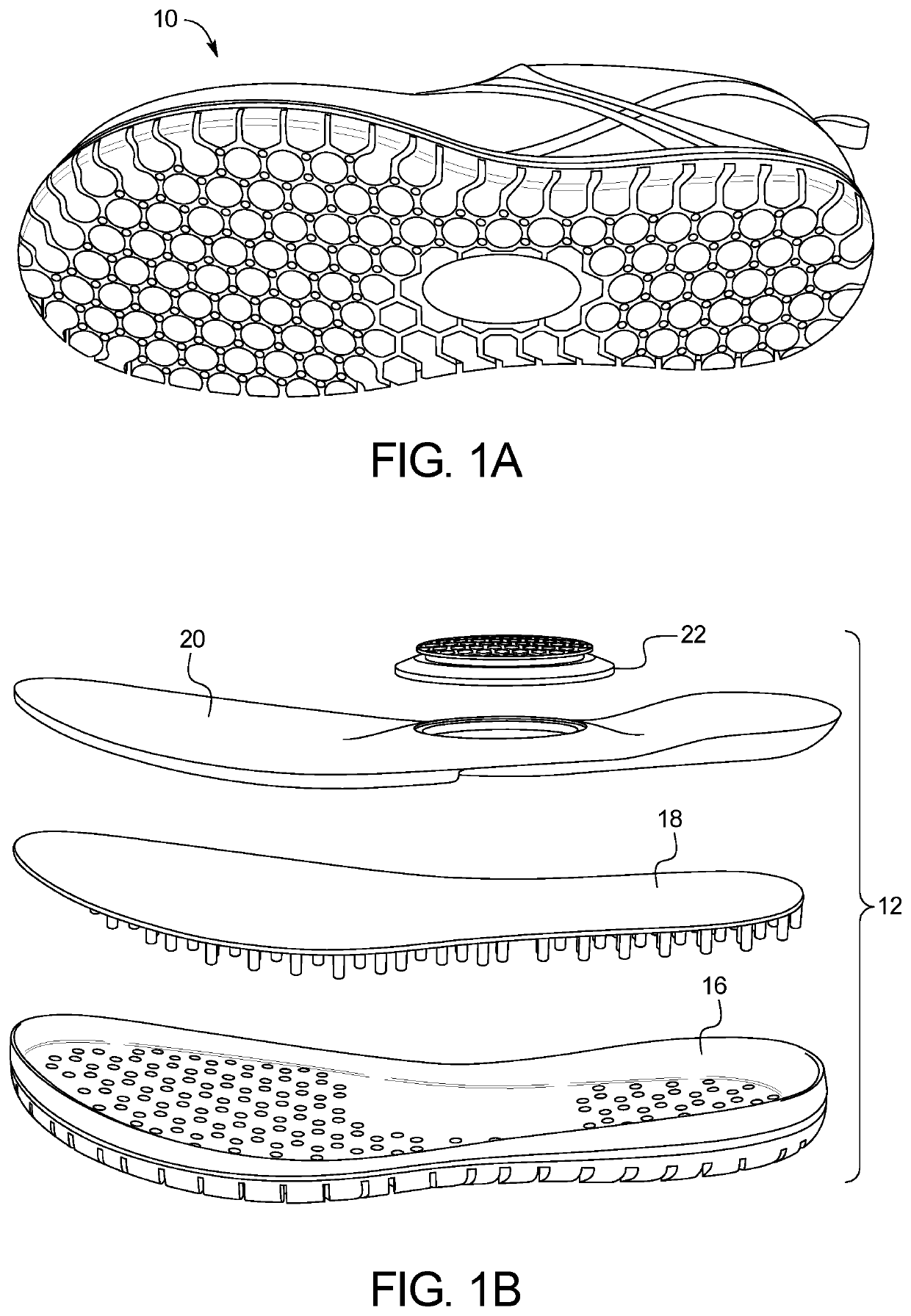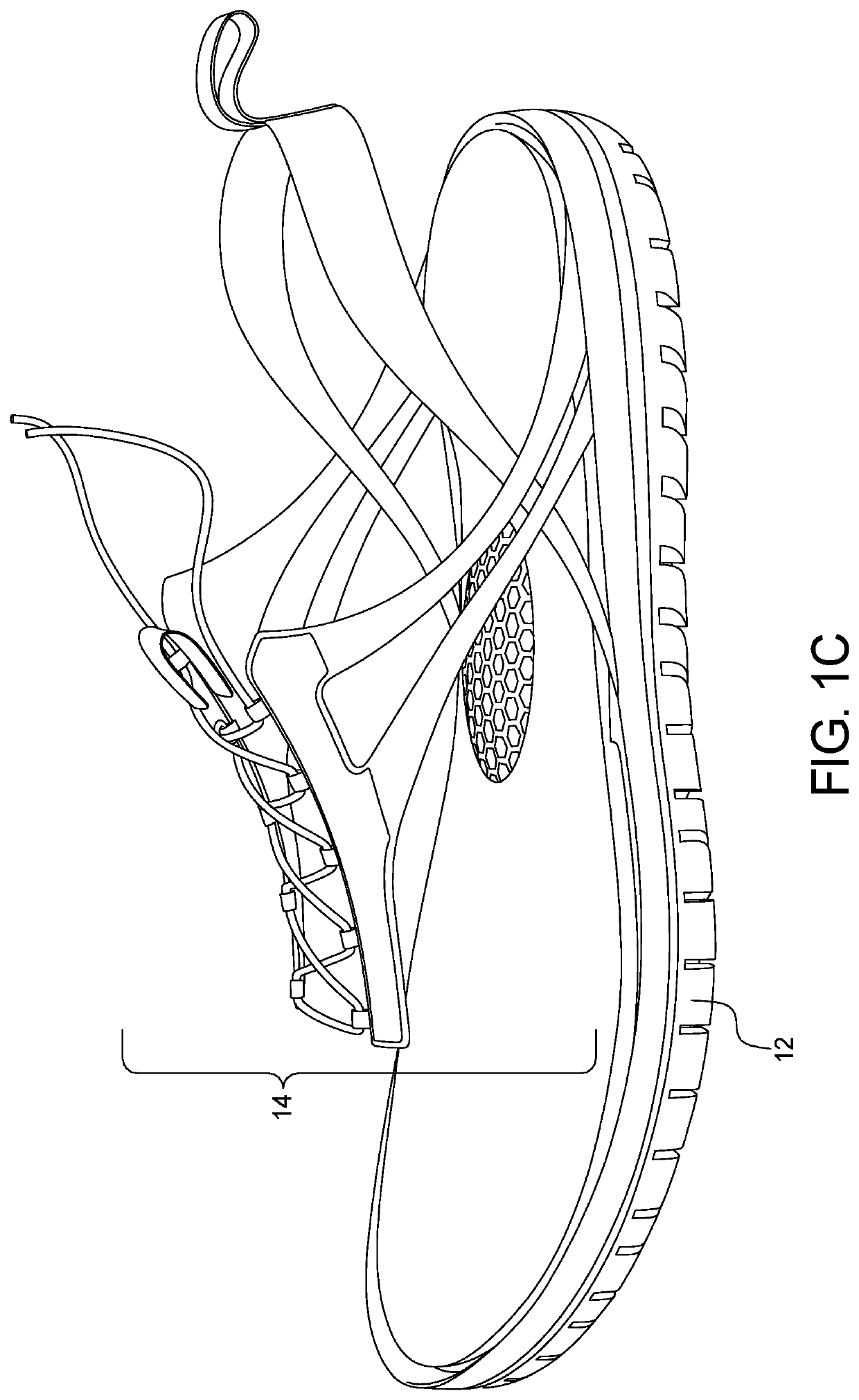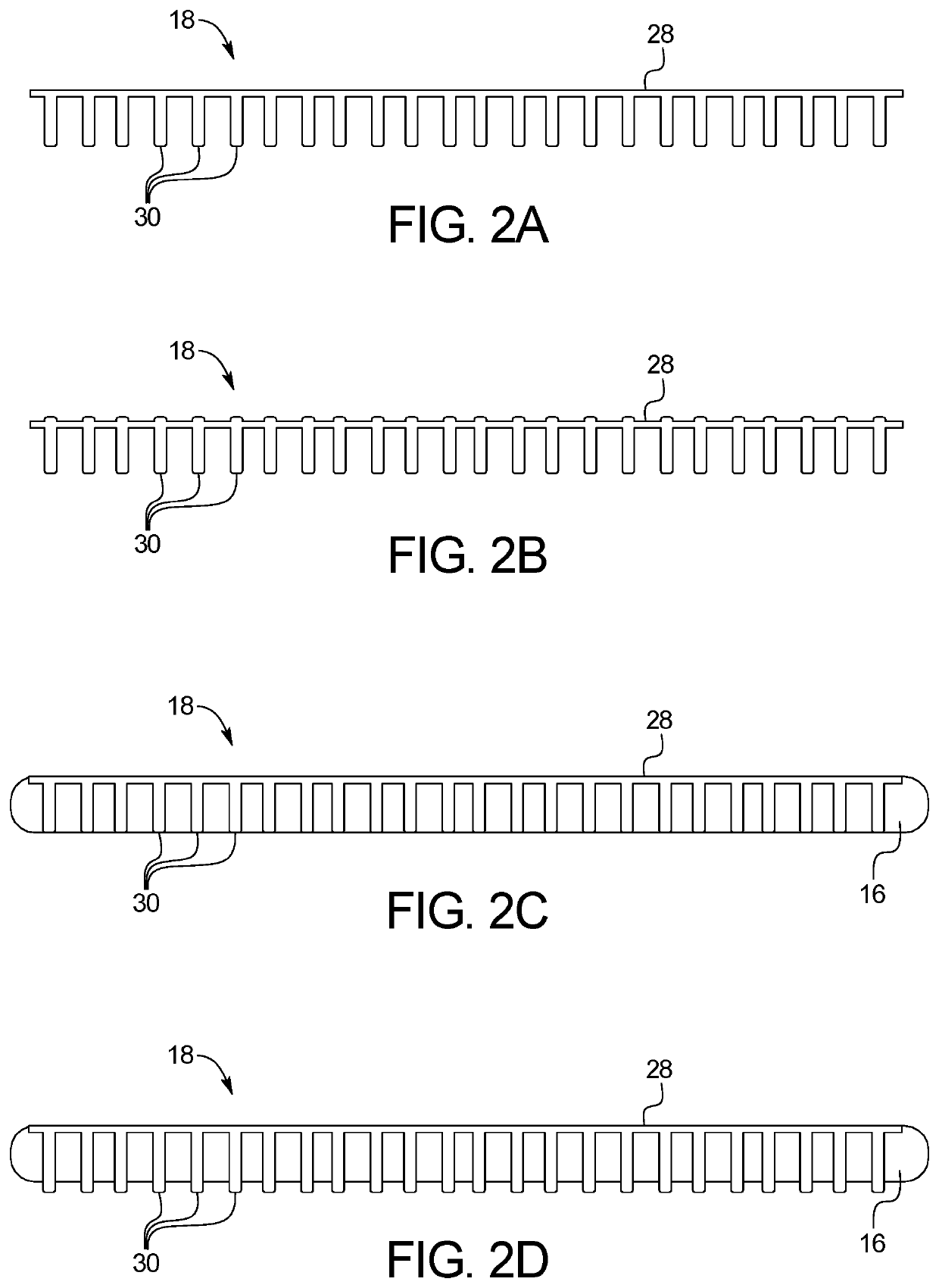Variable Reflex Footwear Technology
a technology of reflex footwear and footbeds, applied in footwear, footwear, applications, etc., can solve the problems of no longer recommended, outdated concepts of long-term support and cushioning of the body, and the vast majority of foot-related problems and pain commonly observed, so as to achieve optimal protective reflex response, optimal synergistic rising and falling of the arch and toes, and enhanced traction
- Summary
- Abstract
- Description
- Claims
- Application Information
AI Technical Summary
Benefits of technology
Problems solved by technology
Method used
Image
Examples
Embodiment Construction
[0037]As shown in FIGS. 1A-1C, the present footwear technology system 10 includes a multilayer sole system 12 and a dynamic upper foot retention system 14, wherein the system 10 can be used in conjunction with a shoe body 8, as shown in FIG. 5.
[0038]The multilayer shoe sole system 12 can include a lower outsole layer 16, a midsole layer 18, and an upper insole layer 20. The sole system can conform with the terrain to mimic barefoot-like stimulus to the soles of the feet. As shown in FIG. 4, a variable reflex technology pod 22 can be located in the arch section 23 of the upper insole layer 20 in order to provide subtle, varied stimulus to the soles of the feet's arch areas.
[0039]As shown in FIGS. 2A-2D, the midsole layer 18 can include a thin pliable sheet body 28 of denser material than the outsole layer 16, wherein the midsole layer 18 includes a plurality of pins 30 extending from a bottom surface of the sheet body 28 of the midsole layer 18, wherein the pins 30 engage with the pi...
PUM
 Login to View More
Login to View More Abstract
Description
Claims
Application Information
 Login to View More
Login to View More - R&D
- Intellectual Property
- Life Sciences
- Materials
- Tech Scout
- Unparalleled Data Quality
- Higher Quality Content
- 60% Fewer Hallucinations
Browse by: Latest US Patents, China's latest patents, Technical Efficacy Thesaurus, Application Domain, Technology Topic, Popular Technical Reports.
© 2025 PatSnap. All rights reserved.Legal|Privacy policy|Modern Slavery Act Transparency Statement|Sitemap|About US| Contact US: help@patsnap.com



